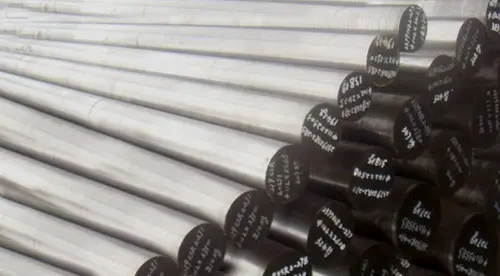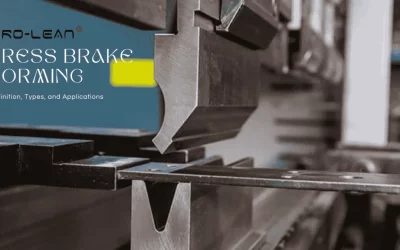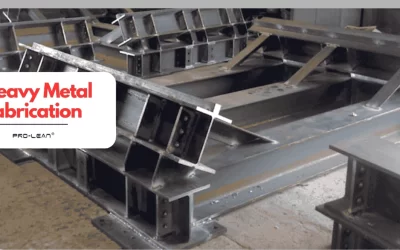
A seemingly small tool, the reamer bit holds an essential role in the world of manufacturing. It’s a tool tasked with an important responsibility – making holes of the exact size and delivering the smoothest possible finish. But what exactly makes the reamer bit so indispensable in precision manufacturing? This article aims to unearth the vital role of the reamer bit, its different types, and applications, and how companies like Prolean are using state-of-the-art manufacturing services to complement traditional reaming processes.
Decoding the Reamer Bit: The Basics
A reamer bit, a reaming drill bit, or simply a reamer, is a precision cutting tool used in metalworking to refine, enlarge, and improve the finish of pre-drilled holes. Reamers are the unsung heroes of precision manufacturing, working meticulously to ensure the creation of the perfect hole. Although similar to a drill bit, the reamer serves a different purpose: it is not used to create new holes but to refine the existing ones.
What Are the Different Types of Reamer Bits?

Different types of reamer bits
Each reamer bit type possesses unique characteristics that suit specific applications, materials, or manufacturing scenarios. Here’s a breakdown of the common reamer bit types:
- Straight Flute Reamers: This reamer has straight, parallel cutting edges and is ideal for machining in a straight line, such as with hand reaming. Its simple design also makes it less prone to clogging, increasing its longevity.
- Spiral Flute Reamers: This reamer comes with helical flutes that push the chips forward, making it suitable for blind holes (holes that don’t go all the way through the material). Its design helps to maintain alignment and provides a smooth finish.
- Tapered Reamers: As the name suggests, these reamers have a tapered profile, perfect for reaming conical holes. They are commonly used in woodworking and metalworking to prepare holes for taper pins.
- Shell Reamers: Shell reamers are designed for large-diameter reaming. They provide precision and are often used in heavy machinery and automotive applications.
- Chucking Reamers: These reamers are used in machine applications. Their straight or spiral flutes make them ideal for producing a close-tolerance hole and a smooth finish.
- Carbide Reamers: Known for their hardness and durability, carbide reamers provide excellent performance, particularly with hard materials. Their long lifespan makes them a cost-effective choice for large-scale manufacturing.
Table 1: Reamer Bit Types
| Type | Characteristics | Suitable Applications |
|---|---|---|
| Straight Flute Reamers | Straight, parallel cutting edges | Hand reaming |
| Spiral Flute Reamers | Helical flutes, pushes chips forward | Blind holes |
| Tapered Reamers | Tapered profile | Conical holes, woodworking |
| Shell Reamers | Large diameter reaming | Heavy machinery, automotive |
| Chucking Reamers | Produce close-tolerance hole, smooth finish | Machine applications |
| Carbide Reamers | Hard, durable, long lifespan | Hard materials, large-scale manufacturing |
The Crucial Role of Precision in Manufacturing
In today’s technologically advanced world, precision in manufacturing isn’t just a desirable quality; it’s an absolute necessity. As devices shrink and complex structures become the norm, precision takes center stage to ensure these meticulously designed parts fit and function perfectly together.
The Intersection of Precision and the Reamer Bit
At the intersection of precision and reamer bits, we find an indispensable alliance. The reamer bit’s chief function of delivering accurate diameters and smooth finishes plays a central role in achieving the precision that modern manufacturing demands.
Here’s how the reamer bit contributes to precision:
- Size Accuracy: Reamers are designed to offer high accuracy in enlarging hole sizes. A hole reamed to the right size ensures a perfect fit for the corresponding part, contributing to the overall precision of the assembly.
- Surface Finish: A reamed hole has a superior surface finish compared to a drilled hole. This smooth finish reduces friction, increases the component’s lifespan, and contributes to the precision of the assembly.
- Alignment: Reaming ensures that the hole is not just of the right size and finish but also perfectly aligned. Misaligned holes can lead to the misalignment of the entire assembly, causing issues in functionality.
Table 2: Contributions of Reamer Bits to Precision
| Contribution | How It Achieves Precision |
|---|---|
| Size Accuracy | Ensures perfect fit for the corresponding part |
| Surface Finish | Reduces friction, increases the component lifespan |
| Alignment | Prevents misalignment of the assembly |
In essence, the reamer bit’s purpose is intricately tied to precision. Its operation might seem minor in the grand scheme of manufacturing, but it ensures that every piece of the puzzle fits together perfectly. Without it, precision, as we understand it in contemporary manufacturing, wouldn’t be achievable.
What Are the Important Considerations for Using Reamer Bits?
In theory, the operation of a reamer bit is straightforward. But to maximize its potential and longevity, certain key factors should be given due consideration.
1. Selection of Reamer Type
The first critical factor is selecting the appropriate reamer type. Each reamer variant has a specific design to meet particular requirements, as we saw in Table 1. For instance, while straight flute reamers are ideal for hand reaming, spiral flute reamers are more suitable for blind holes. It is essential to understand your application and select the appropriate reamer type to achieve the desired result.
2. Understanding the Material to be Reamed
The material to be reamed significantly influences the choice of the reamer bit. Some reamers are designed to handle hard materials, while others are better for softer materials. For instance, carbide reamers, known for their hardness and durability, are an excellent choice for reaming hard materials.
3. Managing Speed and Feed Rates
The speed and feed rates at which the reamer operates play a critical role in the final outcome. If the speed or feed rate is too high, the reamer may wear out quickly, or the hole’s finish might be compromised. Conversely, too low a speed or feed rate might lead to an inefficient operation.
4. Judicious Use of Cutting Fluids
The use of cutting fluids in reaming is often necessary to cool the tool and the workpiece, minimize tool wear, and flush away chips. However, it’s important to use them judiciously, as excessive cutting fluid can lead to slipping, while insufficient application might lead to overheating.
Applications of Reamer Bits: Real-world Scenarios

Reamer bit on the action: Engine block
To fully appreciate the impact of reamer bits, it’s worth taking a look at how they’re used in various industries. They find applications across an array of sectors, from automotive to aerospace, each presenting its unique set of challenges.
- Automotive Industry: Reamer bits are extensively used in engine block manufacturing, where holes must be accurately sized for the precise fit of pistons and cylinders. The reamer bits ensure the necessary precision, enabling high-performance engines to deliver peak power.
- Aerospace Industry: In the aerospace industry, where safety and reliability are paramount, reamer bits play a crucial role in manufacturing components. They’re used to create precise holes in wings, fuselage, and engine parts, where even minor discrepancies can have significant implications.
- Medical Industry: In the medical industry, reamer bits are used in the production of surgical instruments and implants. The precision provided by reamers is essential for these tools and devices to function correctly and safely.
- Oil and Gas Industry: The oil and gas industry relies on reamer bits to ensure precise drilling in harsh environments. Reamer bits are used to enlarge boreholes and ensure accuracy in the placement of wells.
- Construction Industry: In the construction industry, reamer bits are used to create precise holes in concrete and other materials. They are commonly used in the installation of plumbing and electrical systems, where accuracy is essential for safety and functionality.
The Impact of Reamer Bit Quality on Precision
Given their critical role in precision manufacturing, the quality of reamer bits can significantly impact the final product’s accuracy. Manufacturing reamer bits is an intricate process that requires a keen eye for detail and stringent quality control.
1. Material Choice for Reamer Bits

The material choice for reamer bits affects their durability, cutting speed, and finish quality. High-speed steel (HSS) is a common material used for reamers due to its excellent cutting performance. Carbide, known for its hardness and wear resistance, is another popular choice, particularly for reaming hard materials or when high production volumes are involved.
2. Manufacturing Process and Quality Control
The manufacturing process of reamer bits involves several steps, including forging, heat treatment, grinding, and coating. Each step must be carefully controlled to ensure the reamer bit meets the necessary dimensional and performance specifications.
Quality control measures such as dimensional checks, hardness testing, and performance testing are essential to ensure each reamer bit meets the stringent standards of precision manufacturing.
Table 3: Factors Affecting Reamer Bit Quality
| Factor | Impact |
|---|---|
| Material Choice | Influences durability, cutting speed, and finish quality |
| Manufacturing Process | Each step (forging, heat treatment, grinding, coating) must be controlled for quality |
| Quality Control | Ensures dimensional accuracy and performance specifications are met |
The Relation: Tolerances and Reamer Bits
Understanding the concept of tolerances is crucial when it comes to reamer bits. Tolerance is the permissible limit or limits of variation in a physical dimension, defined by the plus or minus allowance on a specific dimension of a part. When using reamer bits, the goal is often to achieve a high degree of accuracy, meaning tolerances are tight.
There are several types of tolerances relevant to reaming, including:
Table 4: Types of tolerances relevant to reaming
| Tolerance Type | Impact on Reaming |
|---|---|
| Diameter Tolerance | Influences the selection of the reamer bit size |
| Roundness Tolerance | Determines the quality of reamer bit required |
| Surface Finish Tolerance | Influences the type of reamer bit used |
How Tolerances Impact Reamer Bit Selection?
The desired tolerance of the final product often influences the selection of the reamer bit. Depending on the application, the part may require a precise hole size, which may only be achieved using a specific type of reamer bit. For instance, a hand reamer might be used when the tolerance is somewhat flexible, while a machine reamer would be necessary for tight tolerances.
Reamer bits can wear out over time, which may result in holes being out of tolerance. Regular inspection of reamer bits and replacement when necessary is essential to maintain the desired tolerances. However, replacing reamer bits too frequently can be costly. Therefore, it’s a balancing act between maintaining tight tolerances and maximizing reamer bit life.
Tolerance Range by Type of Reamer Bit
The exact tolerances may vary depending on specific manufacturing conditions, the material being worked, and the quality of the reamer bit itself.
Table 5: Tolerance Range by Type of Reamer Bit
| Type of Reamer Bit | Tolerance Range |
|---|---|
| Hand Reamer | ±0.02mm to ±0.05mm |
| Machine Reamer | ±0.01mm to ±0.02mm |
| Shell Reamer | ±0.01mm to ±0.03mm |
| Taper Pin Reamer | ±0.02mm to ±0.05mm |
| Carbide Reamer | ±0.005mm to ±0.01mm |
As always, it’s essential to refer to the manufacturer’s specifications and guidelines to understand the exact capabilities and tolerances of a specific reamer bit.
Prolean’s On-Demand Manufacturing Services: Precision Meets Efficiency
The world of precision manufacturing is one that operates on the principles of accuracy, consistency, and reliability. These principles form the bedrock of Prolean’s On-Demand Manufacturing Services.
At Prolean, we understand the value of precision and the role reamer bits play in achieving it. Whether you’re looking for reamer bits or a comprehensive manufacturing solution, Prolean offers an array of services tailored to your specific needs. Our state-of-the-art manufacturing facility, coupled with a team of experienced professionals, ensures that we deliver nothing but the best.
Through our on-demand services, we offer a quick turnaround time, ensuring that your project stays on schedule. Plus, our commitment to quality means that you’ll get precision-engineered products every time.
Conclusion
Precision is at the heart of modern manufacturing. In sectors as diverse as automotive, aerospace, and medical, the demand for precise and consistent results is non-negotiable. Reamer bits, while seemingly small components, play an instrumental role in meeting this demand.
These tools, engineered for precision, enable manufacturers to create parts and components with unparalleled accuracy. The choice of reamer bit, its quality, and the care taken in its usage can significantly impact the precision achieved.
In this intricate world of precision manufacturing, having a reliable partner like Prolean’s On-Demand Manufacturing Services can be a game-changer. Combining speed, quality, variety, and expertise, Prolean is poised to help businesses navigate the demanding terrain of precision manufacturing successfully.
FAQs
What is a reamer bit?
A reamer bit is a type of rotary cutting tool used in metalworking to enlarge or finish a previously formed hole to a precise diameter.
Why is precision important in using reamer bits?
Precision is critical when using reamer bits because even small deviations can impact the functionality and fit of the parts or components being manufactured.
How does the choice of reamer bit affect precision?
The choice of reamer bit affects precision in several ways, including the material to be reamed, the desired finish, and the specific requirements of the application.
How does the quality of a reamer bit impact the final product?
The quality of a reamer bit, determined by factors such as material choice, manufacturing process, and quality control measures, directly impacts the accuracy, finish quality, and durability of the final product. High-quality reamer bits are essential for achieving consistent and reliable precision in manufacturing.




Very insightful! I hadn’t considered the range of reamer types available and how each impacts hole quality and tolerance. For high-volume production, do specific materials or coatings on reamers improve lifespan or performance?
Yes!
Yes, specific materials and coatings on reamers can significantly enhance their lifespan and performance: The common materials for reamers are HSS and Carbide. However, coating like TiN TiCN, diamond etc to improve performance and durability.